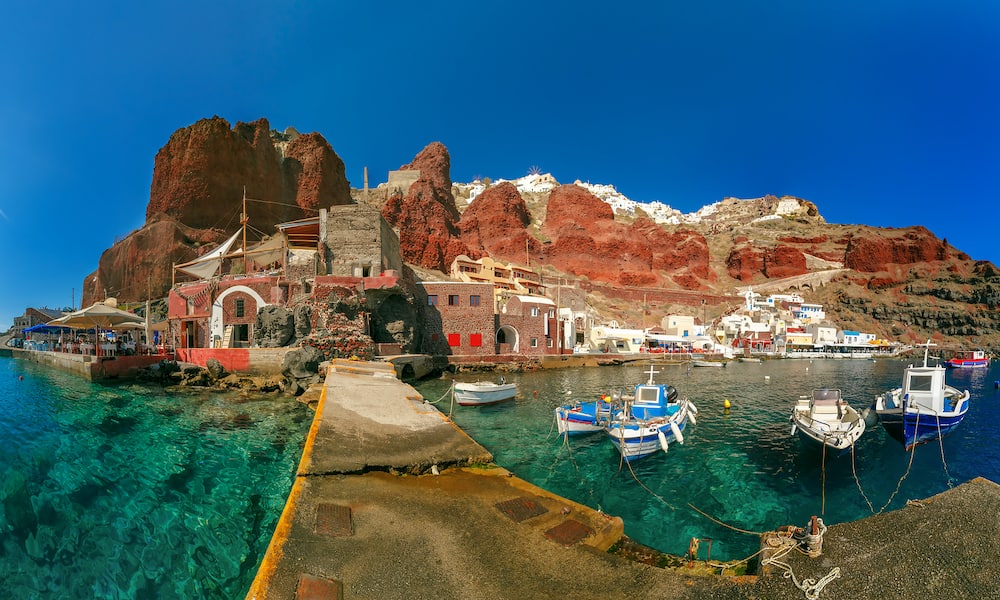18 Magical Things to do in Athens
Athens is the capital of Greece and was one of the world’s oldest cities, with 5th century BC landmarks scattered throughout the area. Ancient Greece was a civilization existing here from 13th to 9th centuries BC, and Athens was the seat of that civilization.
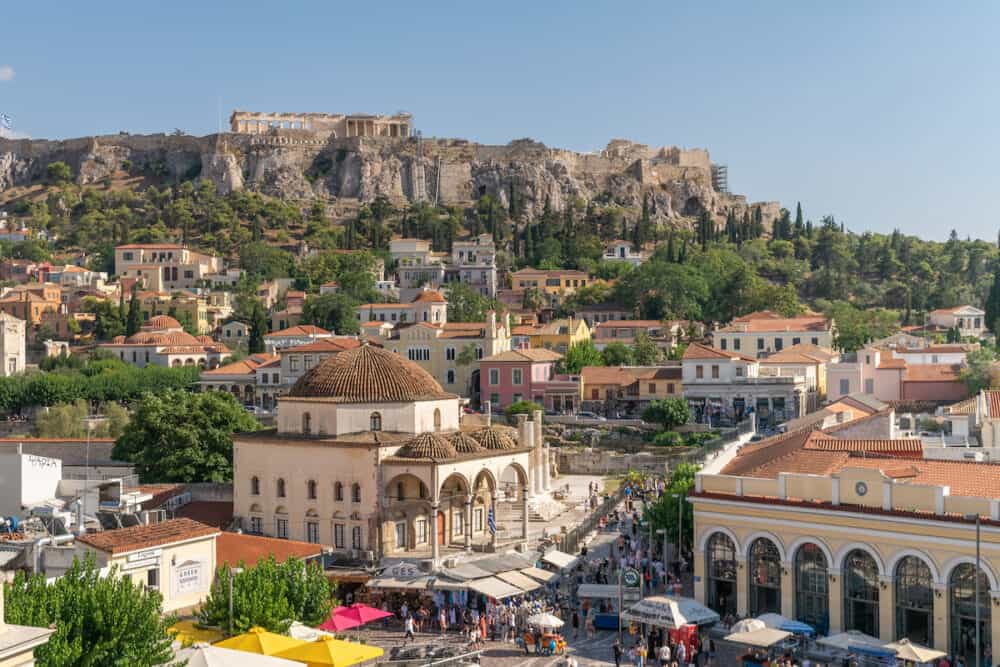
Athens is often referred to as the birthplace of democracy and the cradle of Western Civilization, as it was the home of Plato’s Academy and Aristotle’s Lyceum, among other historical mentions. Today, Athens is a booming metropolis with a large financial sector and the largest passenger port in Europe.
Plan your trip?
Avoid hidden fees in the exchange rate while withdrawing from millions of ATMs abroad, paying in restaurants and shops, and buying your accommodation and flights using the Wise Card. You can hold up to 40+ currencies at once to spend in in over 150 countries, and convert them in real time with the free Wise app.
Need help planning your trip from start to finish? Check out these helpful links:
- Cheap flights
- Savings on accommodation from hostels to luxury hotels
- Affordable car rental options
- Affordable sightseeing tours and day trips
- Travel Adapter – All in one so you don’t have to carry a bunch around
- Don’t be silly and forget Travel Insurance! Get hurt and you’ll regret it…
This post contains some affiliate links for your convenience. Click here to read my full disclosure policy. You can also read our content/editorial policy here.
Acropolis of Athens
The Acropolis of Athens is one of two UNESCO World Heritage sites in in Athens. The Acropolis was built in the 5th Century BC, and is perched above Athens on a rocky outcrop, overlooking the city.
As arguably the most famous monument in Greece, any visit to Athens should include a stop at the Arcopolis. Dominating the hill of the Acropolis, you’ll find the Parthenon, a former temple dedicated to the goddess Athena.
Erechtheion is another ancient Greek temple found here, once considered the most sacred building of the Acropolis.
The Acropolis can be visited on a tour, but you can also visit on your own, and it is easily reached from the city – just walk uphill!
In addition to rich history and architecture, the Acropolis also affords an incredible view of Athens on a clear day.The Acropolis can be visited on a tour,
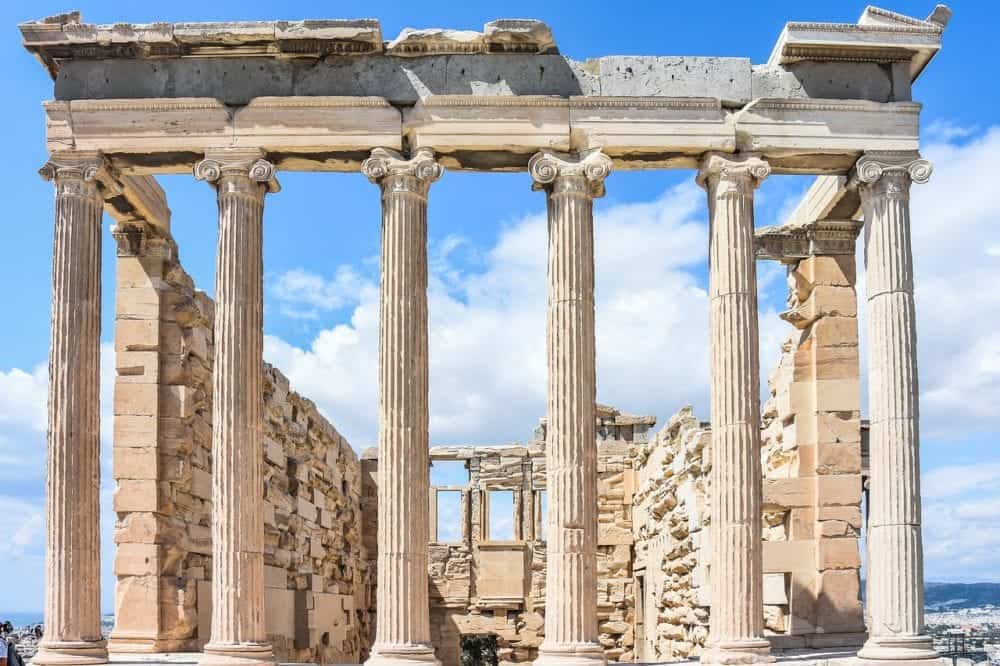
Herod Atticus Odeon
Just below the Acropolis sits the Herod Atticus Odeon, a stone theater where live performances are still given today. Originally constructed in 160 AD and renovated in the 1950’s, the theater now seats over 4,500 people.
To tour the theater, you will need a ticket for the current performance, so check the schedule ahead of time to see what acts might interest you. It could be Yanni, the Ballet, or the annual Athens & Epidaurus Festival.
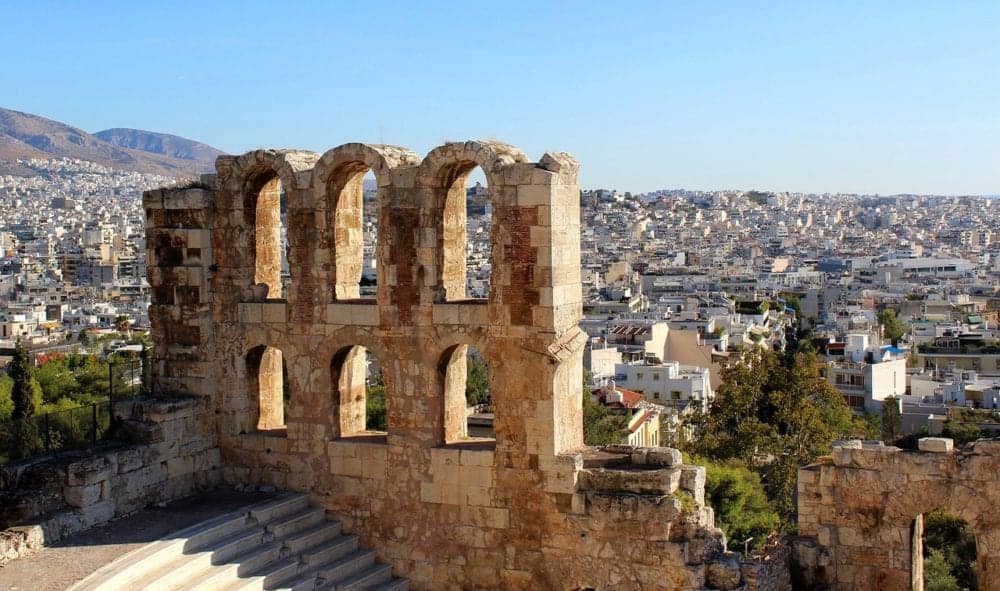
Acropolis Museum
After a visit to the Acropolis, you will undoubtedly want to continue on with a trip to the Acropolis Museum, where many artifacts are now housed.
The current version of the Acropolis Museum was just opened with over 14,000 square meters of exhibition space. For just 5 Euros, you can spend an entire day perusing artifacts that were found in and around the slopes of the Acropolis.
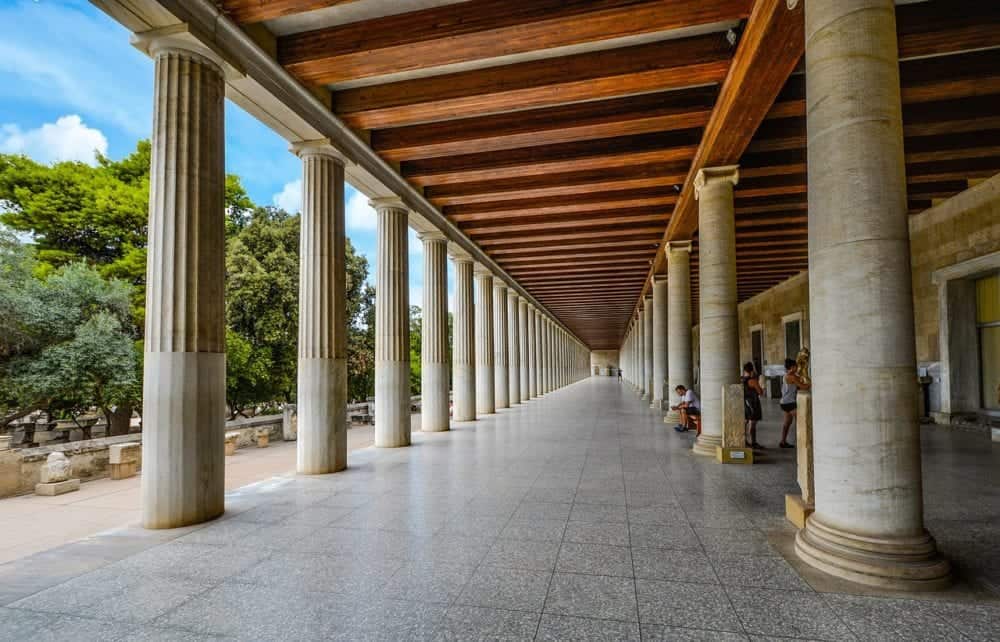
Plaka
The hillside neighbourhood of Plaka is a quiet, cobblestoned district lined with cafes, boutiques and tavernas. While visited by many tourists, often en route to the Acropolis, Plaka maintains a “Greek village” vibe and is a great place to enjoy a bite to eat or a cocktail.
Cine Paris is a movie theather, with an outdoor screen on the rooftop which is open in the summer. Against a backdrop of the Parthenon, cinema-goers can watch contemporary movies under the stars.
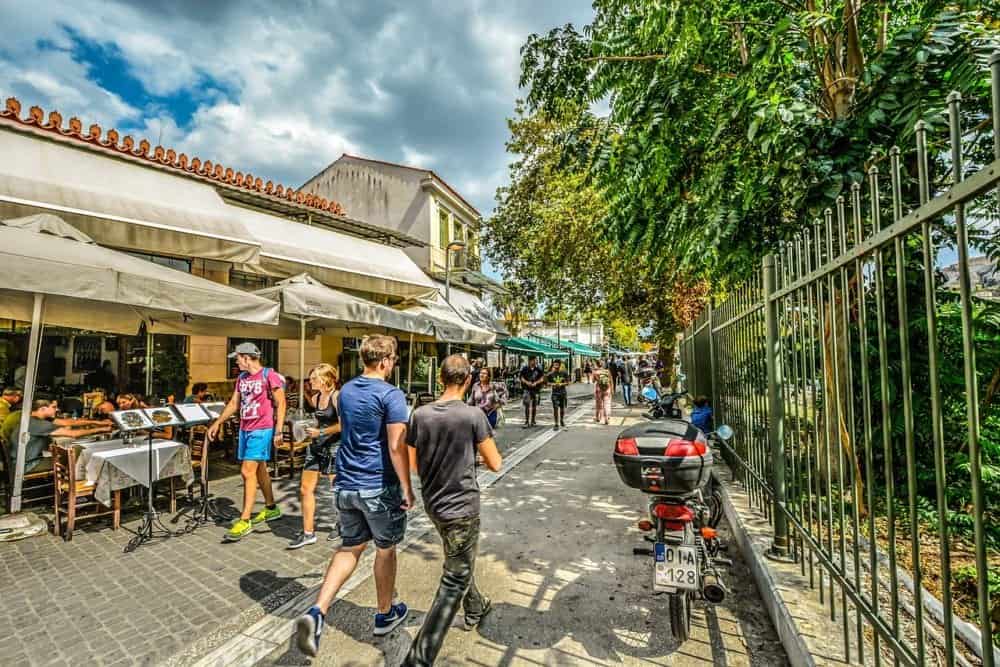
Anafiotika
Between Plaka and the Acropolis you will find the small village of Anafiotika. The neighborhood originally came about when workers from the Cyclades islands were brought in to help rebuild Athens for the Ottoman Empire.
As such, the houses here resemble those found on the islands. This is a quiet neighborhood with no tourist attractions or services, but you might enjoy a stroll through the winding streets to admire the homes and gardens that remain.
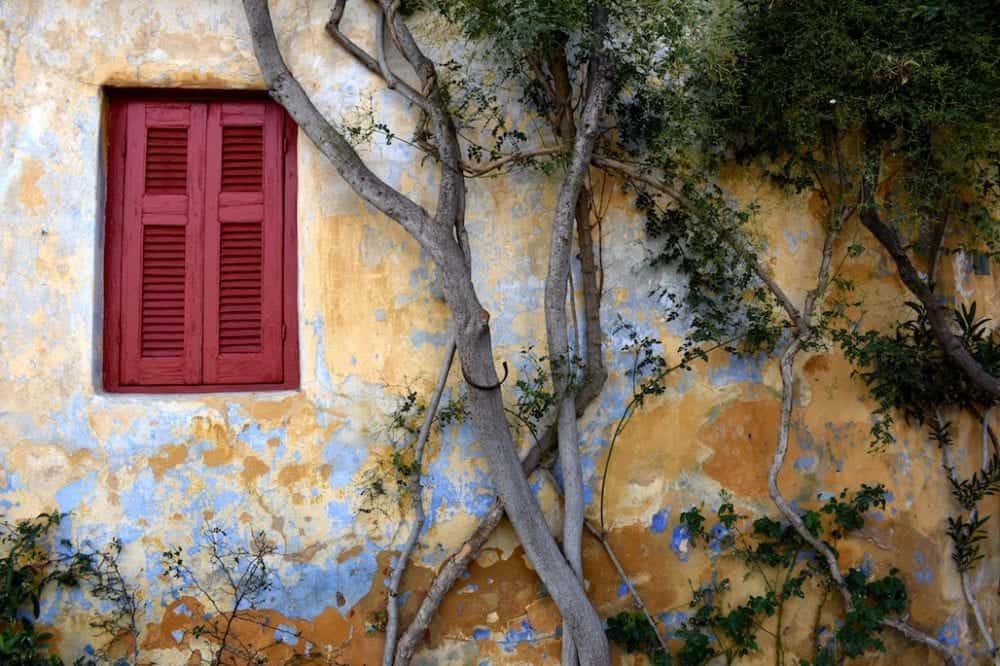
Monastiraki
Monastiraki is another neighborhood of Athens, containing ancient landmarks but best known for the Monastiraki Flea Market.
Don’t be fooled by the name, as it’s actually one of Athen’s premiere shopping districts, selling typical tourist souvenirs, jewelry and home goods.
On Sundays, many stores close and you will find a more traditional “flea market” atmosphere with second-hand items and antiques.
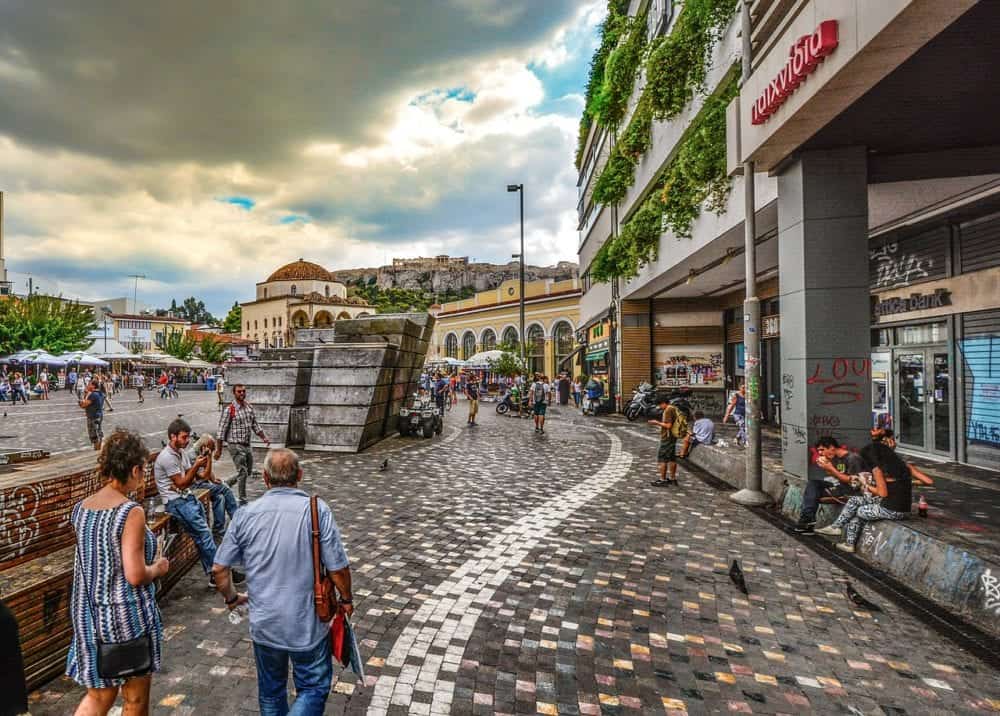
Kifissia
Sometimes called the “Beverly Hills” of Athens, Kifissia is an affluent suburb 14 kilometers from downtown Athens.
This is where you want to go for luxury shopping, upscale dining and high-end art galleries. If you prefer a quieter experience, you might consider staying in Kifissia.
Ancient Agora
In Ancient Greece, and agora was a public space used for assemblies and markets. The Ancient Agora of Athens is one of the more famous and central examples, serving as a public space for over 5000 years.
The grounds remain open today for walking tours and visitors. A guide of some sort will best help you enjoy your visit to the Ancient Agora.
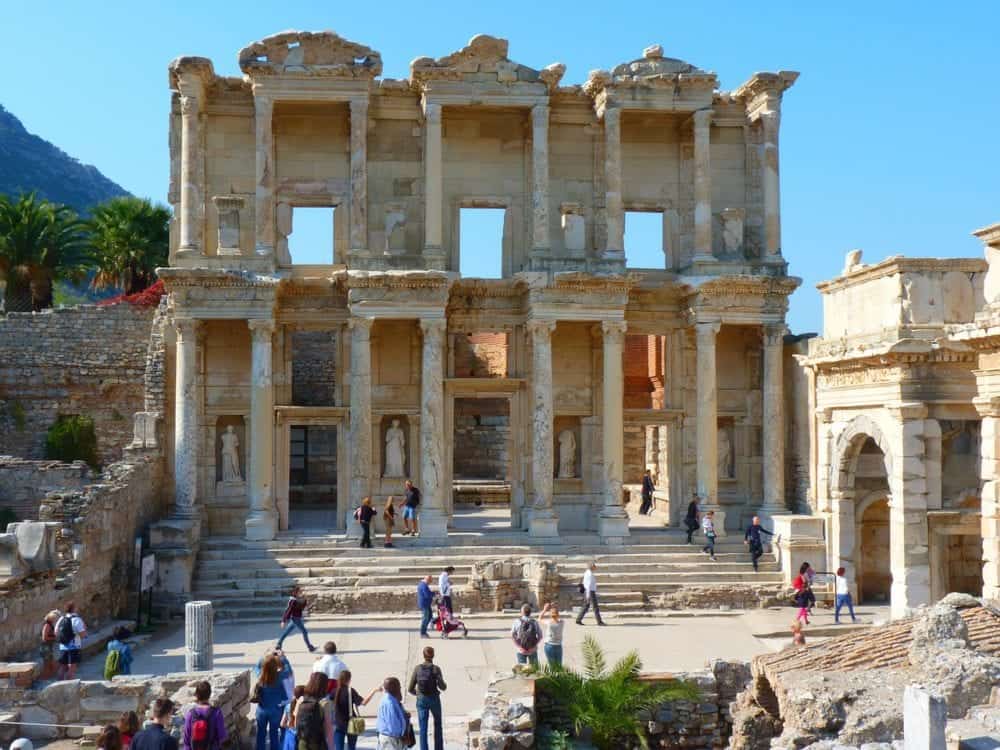
Temple of Hephaestus
Adjacent to the Agora is the Temple of Hephaestus, the best preserved ancient temple in Greece. The temple is surrounded by columns and was originally dedicated to Hephaestus, the god of fire.
The temple later served as an Orthodox church until 1834 when King Otto declared the building a museum, which it remained until 1934.
The use as an Orthodox church is one reason it remains so well preserved as it wasn’t allowed to fall into disrepair as many other buildings from Ancient Greece.
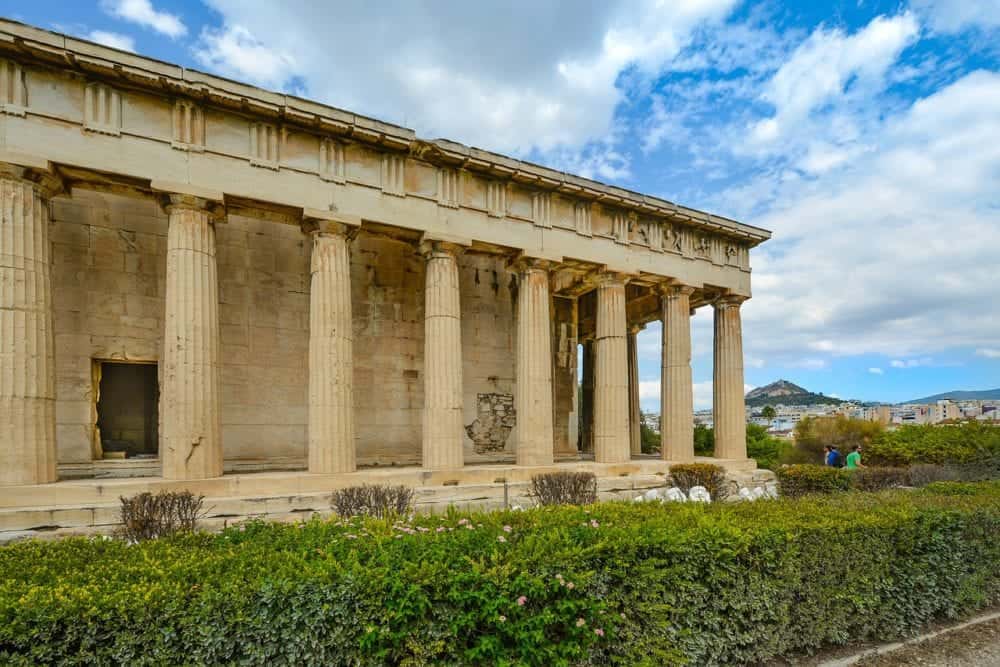
Benaki Museum
The Benaki Museum of Greek Culture is a more modern-day museum, opened in 1930 to house the collections of Antonis Benakis, the son of a politician, who became a well-known art collector.
The museum holds Greek works of art, from modern back to pre-historic times, including Islamic art and Chinese porcelain. The exhibits often travel, so be sure to check the website to see what is available during your visit.

National Archaeological Museum
With so much rich history in the surrounding area, it’s no surprise that Athens’ National Archaeological Museum is the largest of its kind in Greece, and one of the most important collections of ancient Greek art in the world.
The contents are so precious, the museum was closed during WWII, and the most valuable contents buried, to avoid looting and destruction. Rounding out the collection are several temporary exhibitions. The museum is open every day, and admission is 5 Euros.
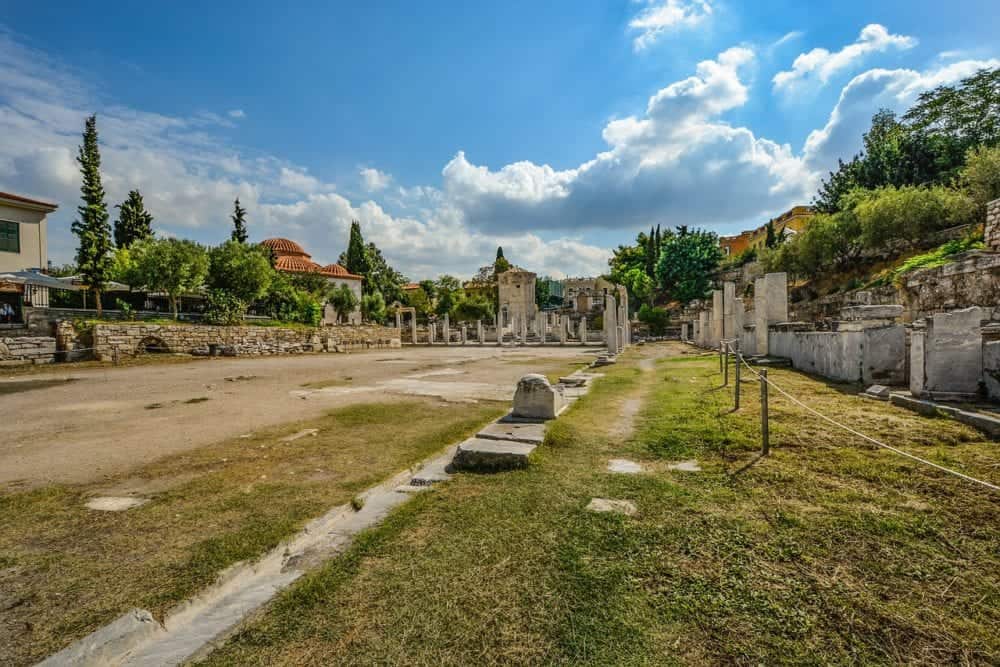
Panathenaic Olympic Stadium
The Olympic Game originated in Greece, so it’s only fitting that Athens most recently hosted the modern Olympic Games in 2004.
While some sites from those Olympic Games now lie abandoned, the Panathenaic Stadium remains open to visitors.
For a 3 Euro entry fee, visitors receive an audio device for a guided tour of the stadium, which has a long history tied to the Olympic Games. There is also a small Olympic Museum on the grounds.

Daphni Monastery
Along with the Acropolis of Athens, Daphni Monastery is the other UNESCO World Heritage site found in Athens. This 11th century Byzantine monastery lies in the suburb of Chaidari, 11 kilometers northwest of Athens.
The monastery is along the “Sacred Way to Eleusis” and has changed hands many times in the ensuing centuries. It is on the site of the ancient sanctuary of Apollo Daphnaios and was excavated in the late 1800’s.
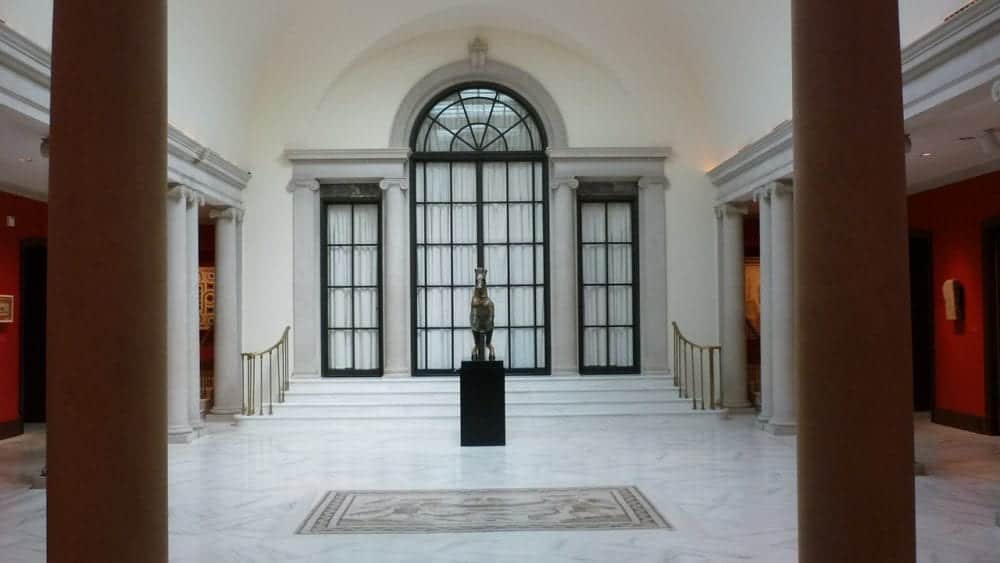
Sounio
Cape Sounio is a peninsula located 70 km from Athens and is where you’ll find the Temple of Poseidon, the god of the Sea.
In addition to the temple ruins, there are several beaches in the area, where you can stay to watch the sun set over the Aegean Sea.
Sounio is most easily reached by car or coach bus, however you can find your way using the intercity coach as well.
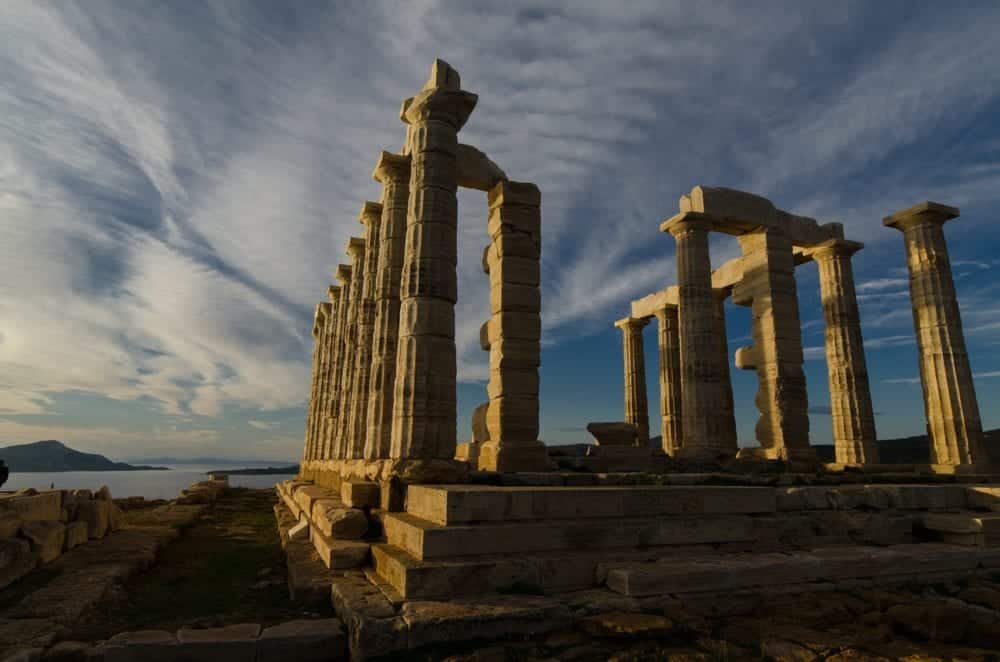
Mount Lycabettus
Mount Lycabettus is an easily recognized landmark in the city of Athens. This limestone hill towers 300 meters over Athens, and is the highest point of the city.
Visitors can walk to the top of the hill, or take the funicular from Kolonaki neighborhood. The summit provides breathtaking views across the city, including the Acropolis and at the top you can visit a restaurant, a chapel and a theater.
Of course, sunset is a spectacular time to enjoy the view from Mount Lycabettus. The funicular operates from 9am to 2:30 am, so you can stay well into the wee hours if you’d like!
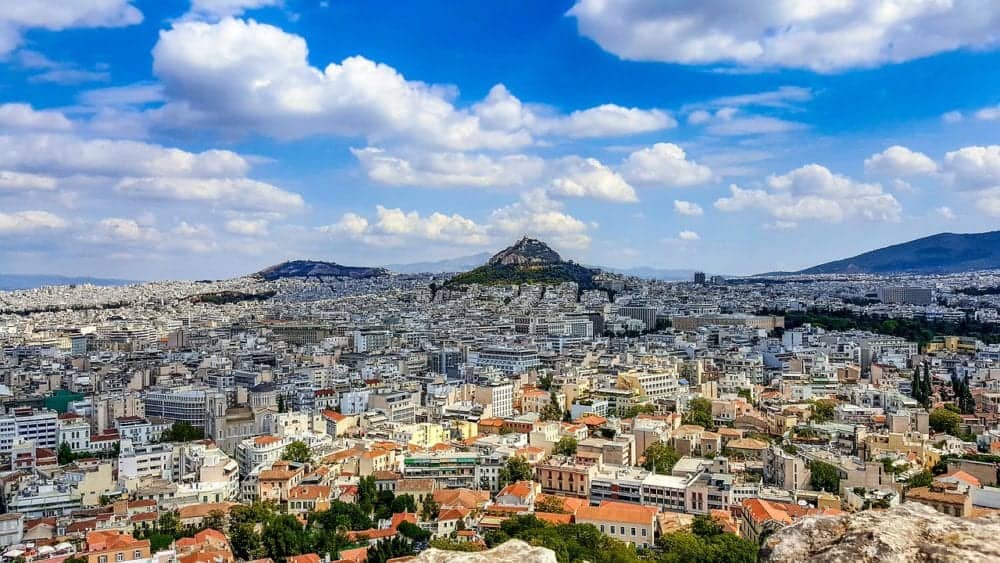
Beaches of Athens
Greece is world-renowned for beaches, but often beach-seekers head to the islands for time in the sand. If you don’t have time for island-hopping during your trip to Athens, fear not, there are still lovely beaches within reach of the city.
Astir Vouliagmeni is a luxury beach, with a luxury entrance fee, located in the southern suburb of Vouliagmeni. At up to 30 euros per person on the weekends, the beach is still very popular.
Also is Vouliagmeni is Kavouri, a great swimming beach with sunbeds available for rent. Conveniently, this beach can be reached via public transportation.
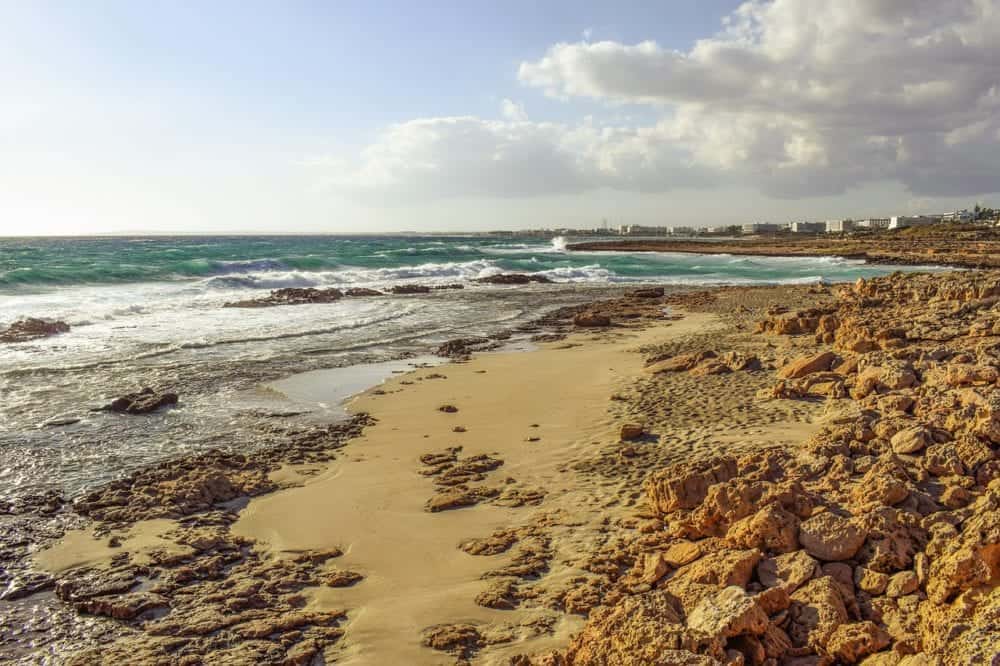
Island hopping from Athens
On the other hand, if you do have time for a bit of island hopping, there are many nearby islands easily accessible from Athens.
Of course, you can book a multi-day cruise or just take a ferry to the nearby Saronic Islands. The closest islands to Athens, Aegina, Poros, Hydra and Spetses are popular destinations for weekend breaks from the city.
You can join a chartered tour for your island hopping excursion, just join the ferry system to get around.Aegina, Poros, Hydra and Spetses are popular destinations
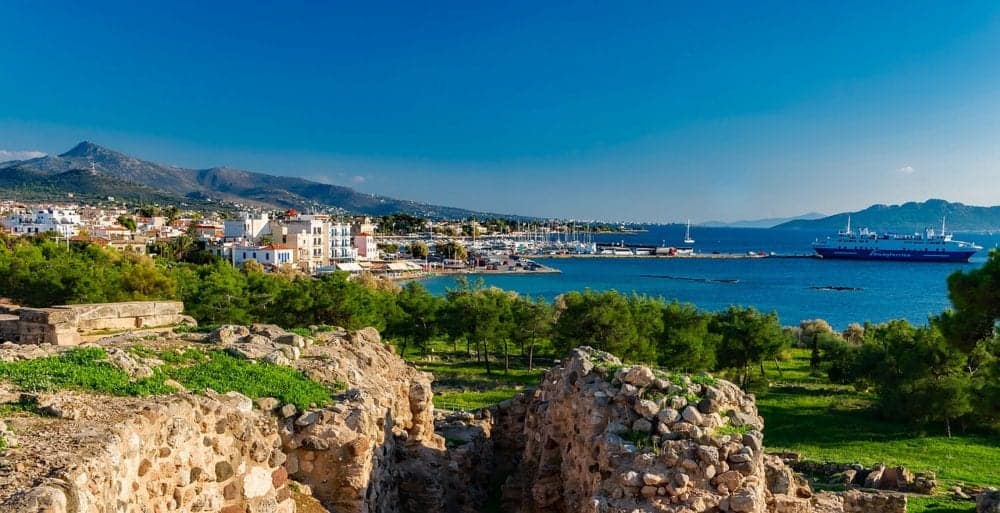
Greek Food
A visit to any place in Greece, especially Athens, must include an abundance of famous Greek cuisine.
A food tour is a great way to sample all of the amazing Greek food in Athens, or you can wander the streets and markets, choosing for yourself from Gyros, Spanakopita, Moussaka, lamb and Saganaki.

If you’d like to save it for later, please save it to Pinterest.
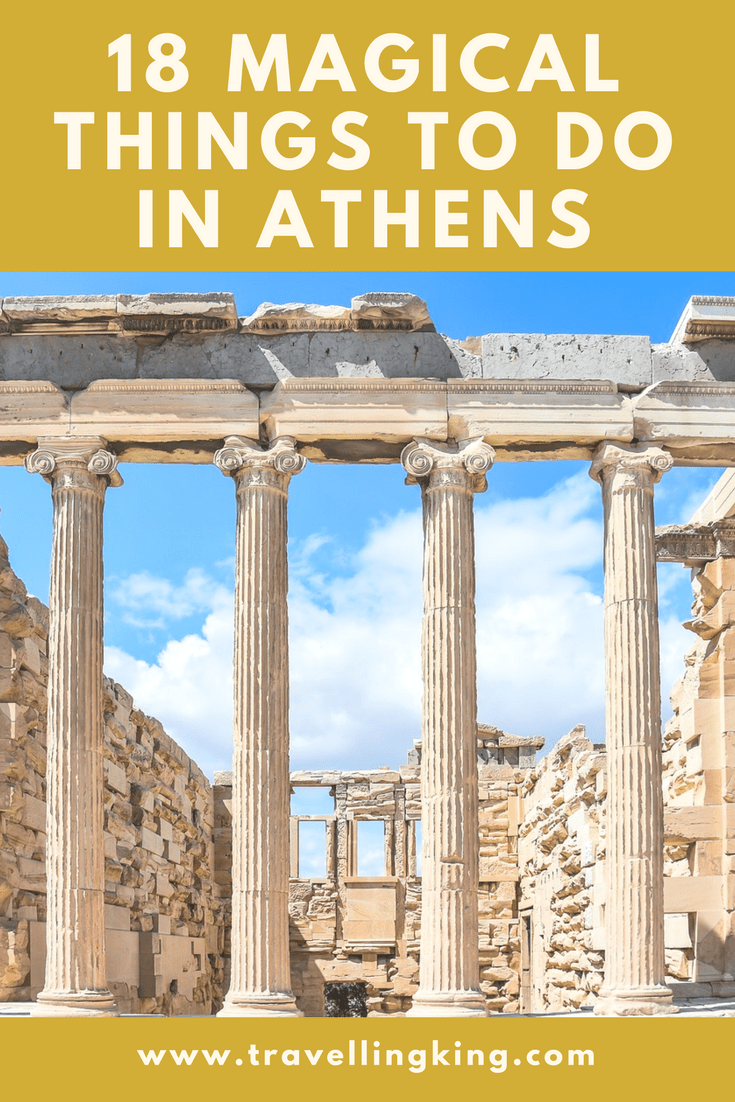


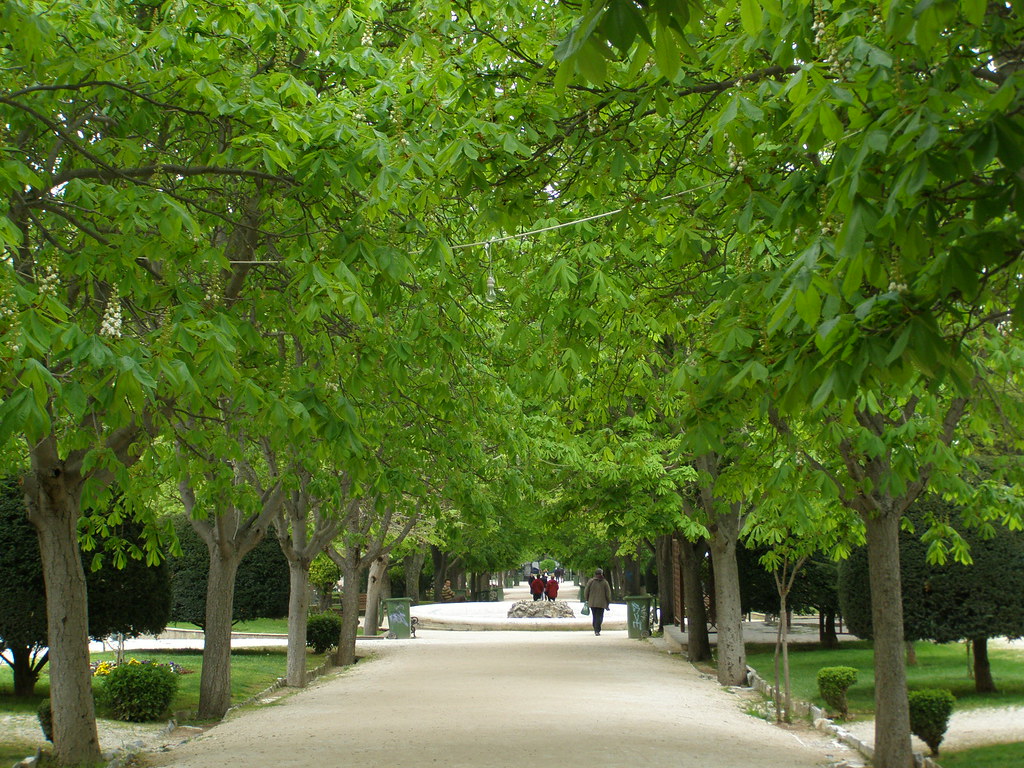

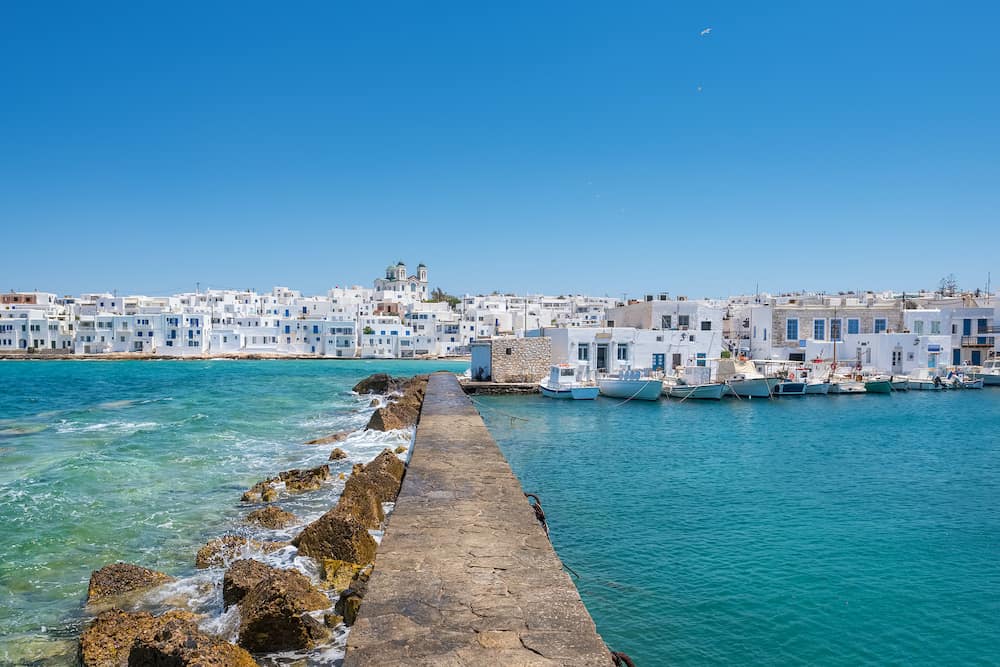
![Where to stay in Crete [Best Places to Stay for 2024]](https://www.travellingking.com/wp-content/uploads/2023/03/Crete-Beautiful-Agios-Nikolaos-town-on-lake-Voulismeni.jpg)


![Where to stay in Mykonos [Best Places to Stay for 2024]](https://www.travellingking.com/wp-content/uploads/2024/01/Where-to-stay-in-Mykonos.jpg)
